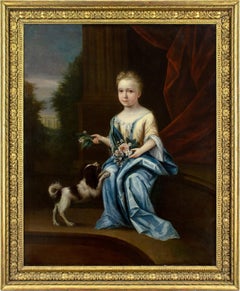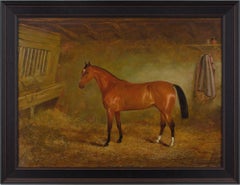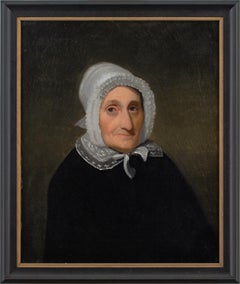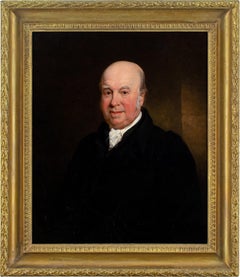Want more images or videos?
Request additional images or videos from the seller
1 of 12
Peter MønstedPeter Mønsted, Portrait Of Aage Jørgensen, Oil Painting1928
1928
$958.13List Price
About the Item
- Creator:Peter Mønsted (1859 - 1941, Danish)
- Creation Year:1928
- Dimensions:Height: 20.5 in (52.07 cm)Width: 16.5 in (41.91 cm)
- Medium:
- Movement & Style:
- Period:
- Condition:Artwork presents well. Craquelure but the paint is stable. Frame with some light wear.
- Gallery Location:Cheltenham, GB
- Reference Number:1stDibs: LU2328211655172
About the Seller
5.0
Platinum Seller
Premium sellers with a 4.7+ rating and 24-hour response times
Established in 2017
1stDibs seller since 2023
245 sales on 1stDibs
Authenticity Guarantee
In the unlikely event there’s an issue with an item’s authenticity, contact us within 1 year for a full refund. DetailsMoney-Back Guarantee
If your item is not as described, is damaged in transit, or does not arrive, contact us within 7 days for a full refund. Details24-Hour Cancellation
You have a 24-hour grace period in which to reconsider your purchase, with no questions asked.Vetted Professional Sellers
Our world-class sellers must adhere to strict standards for service and quality, maintaining the integrity of our listings.Price-Match Guarantee
If you find that a seller listed the same item for a lower price elsewhere, we’ll match it.Trusted Global Delivery
Our best-in-class carrier network provides specialized shipping options worldwide, including custom delivery.You May Also Like
Mother and Child - Classic Portrait
By Francis Luis Mora
Located in Miami, FL
This warm portrait looks like it could have been painted by Corot. Francis Luis Mora paints in that tradition. It's a small painting that invites the viewer to look closer. The art...
Category
1920s Academic Portrait Paintings
Materials
Oil, Board
Portrait of a woman in red. Famous French painter
By Jean-Jacques Henner
Located in New York, NY
Great piece by this french academic artist, noted of his use of sfumato and chiaroscuro in painting nudes, religious subjects and portraits. Signed top-right.
Category
1890s Academic Portrait Paintings
Materials
Oil, Cardboard
$3,500
Free Shipping
H 9.06 in W 6.3 in D 0.79 in
Mid-Century Americana "Good House Keeping Magazine", 1948
By Michael Silver
Located in Miami, FL
When the Wood Grows Dry "Good House Keeping Magazine" illustration
Surreal depiction of a young mid-century girls social life Good House Keeping Magazi...
Category
1940s Academic Figurative Paintings
Materials
Gouache, Board
Pre World War II Austrian Judaica Oil Painting Hasidic Rabbi Portrait
By Rudolf Klinsbogl Klingsberg
Located in Surfside, FL
Rudolf KLINGSBÖGL Austrian Viennese painter and teacher. Chassidic rebbe with Shtreimel.
Klingsbogl was active in Vienna and is known for his typical portraits and paintings of interiors - workshops, pubs and cellars. His style is very distinctive. rare to find good jewish work that survived the holocaust as so much of it was destroyed.
Other works by Rudolf Klingsbogl (sometimes known as Klingsberg}: Rabbis Studying Around a Table, The Huntsman, The Pet Bird, Blacksmith Interior Scene, Three Men with Chat and Drink, The Sailors, The Old Drinker, Debating the News, Sunday Afternoon, Man Looking at Pocket Watch. Game of Cards in a Tavern, Wolfgang Amadeus Mozart as a Child, Franz Schubert at the Piano, Johann Strauss (The Younger).
Realistic portrait of an older rabbi visiting and blessing a child in a European marketplace...
Category
Early 20th Century Academic Portrait Paintings
Materials
Oil
$2,000
H 12 in W 10.75 in
La Carmencita by John Singer Sargent
By John Singer Sargent
Located in New Orleans, LA
John Singer Sargent
1856-1925 American
Stamped by artist's estate (en verso)
Oil on canvas
John Singer Sargent, widely regarded as one of history's most distinguished portraitists...
Category
19th Century Academic Portrait Paintings
Materials
Canvas, Oil
19th Century French Realist Oil Profile Portrait of Lady Beautiful Quality
Located in Cirencester, Gloucestershire
French realist artist of the 19th century
oil painting on board, unframed
board: 12.5 x 10.5 inches
provenance: private collection, France
condition: ...
Category
Mid-19th Century Academic Portrait Paintings
Materials
Oil
$1,309
H 12.5 in W 10.5 in
Woman Reading by JOZEF ISRAËLS - Dutch painter, Hague School, portrait art
By Jozef Israëls
Located in London, GB
Woman Reading by JOZEF ISRAËLS (1824-1911)
Oil on Panel
21 x 12.5 cm (8 1/4 x 4 15/16 inches)
Signed lower right
Executed circa 1870
Artist biography
Du...
Category
19th Century Academic Figurative Paintings
Materials
Oil, Wood Panel
$9,500
H 8.27 in W 4.93 in
Portrait of a Young Man with a Straw Hat oil on canvas painting
Located in Barcelona, Barcelona
Title: Portrait of a Young Man with a Straw Hat
Artist: Josep Cusachs i Cusachs (1851-1908)
Year: 1884
Technique: Oil on canvas
Dimensions (unframed): 18.1 x 15 inches
Dimensions (fr...
Category
1880s Academic Portrait Paintings
Materials
Canvas, Oil
$9,031 Sale Price
37% Off
H 18.12 in W 14.97 in
Cleopatra Queen of Egypt 17' century Painting Oil on Canvas
Located in Rome, IT
Amazing painting of Cleopatra oil on canvas with a gilt wood frame.
Attributed to Giuseppe Diamantini (Fossombrone 1621-Venice 1705)
The dramatic subje...
Category
Late 17th Century Academic Figurative Paintings
Materials
Oil
$57,800
H 48.82 in W 39.38 in D 1.97 in
Cleopatra Queen of Egypt 17' century Painting Oil on Canvas
Located in Rome, IT
Amazing painting of Cleopatra oil on canvas with a gilt wood frame.
Attributed to Giuseppe Diamantini (Fossombrone 1621-Venice 1705)
The dramat...
Category
Late 17th Century Academic Figurative Paintings
Materials
Oil
$57,800
H 48.82 in W 39.38 in D 1.97 in
More From This Seller
View AllJohn Verelst (Circle), Portrait Of A Young Lady With A Spaniel
By John Verelst
Located in Cheltenham, GB
This large early 18th-century full-length portrait depicts a seated young lady before a classical column and distant country house. It was formerly in the collection of Dalham Hall i...
Category
Early 18th Century Rococo Portrait Paintings
Materials
Canvas, Oil
19th-Century English School, Portrait Of A Bay Horse, Antique Oil Painting
Located in Cheltenham, GB
This charming mid-19th-century English school oil painting depicts a bay horse in a stable.
The British aristocracy has always had a passion for equestrian activities, and during th...
Category
Mid-19th Century Victorian Animal Paintings
Materials
Oil, Canvas
Mid-19th-Century French School, A Pair Of Nanas, 2 x Oil Paintings
Located in Cheltenham, GB
This charming pair of mid-19th-century French School portraits depicts two grandmothers, both presumably widows, wearing black gowns and white bonnets.
Alas, the identity of these r...
Category
Mid-19th Century Portrait Paintings
Materials
Canvas, Oil
Early 19th-Century English School Portrait Of Samuel Jones Of Skeyton, Norfolk
Located in Cheltenham, GB
This fine early 19th-century English oil painting depicts Samuel Jones of Skeyton, Norfolk, smartly attired in a black coat with white cravat. The portrait was previously in the coll...
Category
1830s Portrait Paintings
Materials
Oil, Canvas
Joszef Schmidt, After Guido Reni Mater Dolorosa, Antique Oil Painting
Located in Cheltenham, GB
This early 19th-century oil painting by Hungarian artist Joszef Schmidt (1810-1875) depicts the Mater Dolorosa. It’s after a work by Italian artist, Guido Reni (1575-1642). Schmidt w...
Category
Early 19th Century Italian School Figurative Paintings
Materials
Panel, Oil
George Clint ARA (Attributed), Portrait Of A Lady In A Brown Dress
Located in Cheltenham, GB
This early 19th-century half-length portrait attributed to British artist George Clint ARA (1770-1854) depicts a young lady wearing a beautiful brown dress, bonnet decorated with small flowers, gold earrings and coral necklace. Clint was a distinguished painter and mezzotint engraver predominantly known for portraiture and dramatic scenes.
Set before an evocative classically-inspired backdrop, she looks out from across the centuries with a composed demeanour. Adorned in the latest fashions, oversized ‘gigot’ sleeves, a delicately-poised bonnet, and a coral necklace for good luck. It’s a charming portrayal by a masterful hand.
Born at Drury Lane, in the heart of London’s West End, George Clint was destined to lead an exuberant life amid the spectacle of theatreland. His father, Michael Clint, was a hairdresser during a time of “hair pomatum, whalebone, wire, lace gauze, and feathers” - so young George would have encountered a variety of ‘characters’ during his childhood.
But despite these elevated surroundings, he soon discovered the darker side of London when thrust into the world of employment. Apprenticed initially as a fishmonger, he trained under a ferocious master who was known to beat him. The hours were unsocial, the conditions rank, and the work was brutal. He soon quit but subsequently found himself toiling for a corrupt attorney who demanded he undertake unscrupulous acts on his behalf.
Seeking a less volatile role, he turned next to house painting, at which he excelled. Commissioned, among other projects, to paint the stones of the arches in the nave of Westminster Abbey. Aside from an incident whereby he almost fell from the second story of a building, all was going well.
Following his marriage in 1792 to Sarah Coxhead, a farmer’s daughter, he began work in earnest as a painter of miniatures, determined to forge a career. Robert William Buss’ memoir celebrates Clint’s success as a miniaturist, stating that “great manual excellence was united with that chaste, delicate feeling for female beauty which characterised all Mr. Clint's portraits of ladies.”
Until this point, it appears he was predominantly self-taught, presumably constrained by a lack of finances. But from hereon in, his industrious nature coupled with several fortunate encounters, led to him developing an enviable talent for both painting and engraving. During the early 19th-century, the acquaintances one kept could make or break your fortunes and perhaps acutely aware of this, Clint’s ‘society’ was an ever-evolving circle of influential personalities.
He was “initiated into the mysteries of engraving” by Edward Bell (act.1794-1819) and produced numerous works after the foremost artists, such as George Stubbs, John Hoppner, and Thomas Lawrence. Following a commission from Lawrence, he struck up a long-term friendship.
Admired for his skill as a mezzotint engraver, he sought next to hone his technique in oils and, as with many aspiring portraitists, his first work in this respect was a depiction of his beloved wife. The pair were both delighted with it, yet over time Clint began to doubt himself and sought the validation of a superior hand - that of Sir William Beechey (1753-1839). However, paralysed with insecurity, he couldn’t face the potential criticism, so his wife took it instead - “with a child under one arm and the portrait in the other”. The result was immeasurably more positive than he’d envisaged and he became closely associated with Beechey until his death in 1839.
Numerous commissions followed from the landed gentry including Lord Egremont, Lord Spencer, and Lord Essex. But also from the theatrical community who would fill his studio at 83 Gower Street, Bloomsbury. His connections within the world of acting led to notable works such as ‘Malvolio and Sir Toby’ (from William Shakespeare's 'Twelfth Night', Act II, Scene iii)’ and ‘Harriet Smithson as Miss Dorillon, in Wives as They Were, and Maids as They Are’.
While his efforts in mezzotint included several contributions to JMW Turner’s Liber Studiorum.
As a measure of his success, Clint was elected an Associate of the Royal Academy in 1821 - a position he later relinquished for personal reasons. Today, he’s represented in numerous public collections including at The British Museum, Harvard Art Museums, The Met, V&A, Yale Center for British Art, and the National Portrait Gallery.
“The respect in which he was held, not only by his brother artists, but by an immense number of eminent men in various professions, and others of the highest rank, was the result of a rare combination of talent, candour, suavity of manner, and integrity of purpose”. [Obituary, 1854].
Housed in a period gilt frame, which is probably original.
Learn more about George Clint ARA in our directory.
Labels & Inscriptions: Supplier’s stencil from Rowney & Forster. The National Portrait Gallery holds a database of supplier’s stencils over the decades. The one here is also presented on two other works by George Clint. ‘Falstaff’s Assignation with Mrs Ford...
Category
1830s English School Portrait Paintings
Materials
Oil, Canvas
Recently Viewed
View AllMore Ways To Browse
Antique Cigar Table
Peder Monsted
Peder Mork Monsted
Peder Severin Kroyer
P Monsted
Victorian Oil Portrait Black
Charles Lutz Warhol Denied
Original 19th C Portrait Of Black
Warhol Denied
1930s Oil Portraits
George Founds
Portrait Children Paintings
Portrait Painting Young Boy
Portrait Canvas Oil Antique Man
Oil Paintings 17 Century
18th Century Oil Paintings For Sale
Dutch Oil Portrait
Sir Joshua Reynolds



